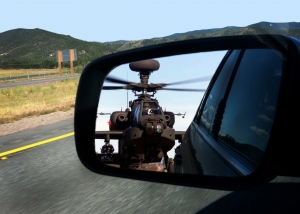

ABOUT a year ago, Finnish comedian Linus Torvalds (strange sense of humour) received some desired (or conversely, unwanted) publicity after he had used his carte blanche for cursing -- the thing which people like Richard Stallman don't have. He gave Nvidia the finger. Maybe this was fruitful, but the point of the matter is, it helped show that Nvidia was behaving badly towards Linux, despite trying to sell many Tegra boards (to be sold with Android/Linux on board). "Nvidia cripples Linux drivers because of Windows," claims a new article [1], requiring no benchmarks such as [2] but only an understanding of how Nvidia makes its drivers. This was known in prior years (they try to match the sides even to the detriment of Linux), but the example cited is new. Nvidia basically neglects Linux or treats it like a second-class citizen at best, even when it's technically better. Nvidia would like to change these perceptions, so it is liaising with Red Hat [3] and competing with Nouveau [4] on decent drivers which can be confirmed not to have NSA back doors (X.Org Server is free software [5], the driver from Nvidia is not). Nvidia must be feeling the pressure from Radeon [6], which is moving forward. Frankly, the right thing to do right now is boycott NVidia and buy from its competition, notably AMD. ⬆
The company have reportedly crippled their Linux drivers to ensure parity with Windows. An Ubuntu user discovered that after an update to Nvidia’s non-free drivers his system was restricted to support only three monitors. The user wanted to connect 4th monitor using two GTX 560Ti graphics cards with a SLI connector.
In several articles now there's been a performance regression found in GpuTest's Plot3D with the older Mesa 9.1 release doing better than Mesa 9.2.
Jerome Glisse has long been involved with open-source Linux graphics drivers, but in recent months he hasn't announced any major breakthroughs like in past years. However, at Red Hat they have struck up a partnership with NVIDIA to work on a new device-agnostic API for the Linux kernel that can benefit the graphics drivers.
While the Nouveau driver has been developed entirely through reverse-engineering the NVIDIA binary blob and is largely developed by community-based developers (many of whom are students), they have made a lot of progress in recent months in pushing forward with new features and functionality for this open-source NVIDIA Linux graphics driver.
While most developers are focused around new innovations for Wayland (or Mir), there's still life ahead for the X.Org Server in maintaining legacy support and other cases where the xorg-server will not die for years to come. In improving the X.Org Server, Adam Jackson at Red Hat has been working on rewriting the GLX portion of the X.Org Server.
AMD developers working on the Radeon X.Org driver (xf86-video-ati) have enabled GLAMOR acceleration support by default at build time.
GLAMOR provides 2D acceleration on the Radeon HD 7000 "Southern Islands" GPUs and newer Radeon GPUs via OpenGL rather than implementing the 2D hardware acceleration by hand with EXA in the DDX driver. While HD 7000 series hardware is now common place and the RadeonSI driver maturing well in recent months, GLAMOR is now being enabled by default at build time for the xf86-video-ati driver.